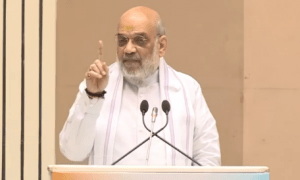Namami Gange, the rejuvenation programme of river Ganga has completed six successful years. The Central Government initiative, launched in June 2014 with a budget outlay of Rs 20,000 crore, has made significant progress in the cleaning and transformation of river Ganga and its tributaries. Its objective includes effective abatement of pollution, conservation, restoration, and rejuvenation of the national river Ganga.
The project is split into three segments or targets, entry-level activities immediate (for visible impact), medium-term activities (to be implemented within 5 years of time frame), and long-term activities (to be implemented within 10 years).
Rs. 29,990 crore has funded 344 projects, 147 projects have been completed and the rest are a work in progress under the programme.
Key achievements under the Namami Gange programme
The programme aims to achieve transformation in several aspects, by creating public awareness regarding river Ganga, initiating projects for infrastructural growth, river cleaning, sustaining biodiversity, and more.
Under the Namami Gange programme, a total of 152 sewerage infrastructure projects have been sanctioned in eight States (Uttarakhand, Uttar Pradesh, Bihar, Jharkhand, West Bengal, Delhi, Haryana, Himachal Pradesh) till February 2020 to create or rehabilitate 4,857 megaliters per day (MLD) sewage treatment capacities and sewer network of 4,972 Km at a cost of Rs. 23,305 crore along Ganga and its tributaries.
Out of 152 sewerage infrastructure projects, 46 projects are completed, 75 projects are in progress and 31 projects are at various stages of tendering. The completed projects have created, 632 MLD sewage treatment capacity and are presently in operation.
The programme has also led to the creation of 28 river-front development projects, 33 entry-level projects for construction, modernization, and renovation of 182 ghats, and 118 crematoria.
Floating solid waste on the surface of the ghats and the river remains one of the major problems. The Namani Gange initiated river surface cleaning projects at 11 locations to solve this problem.
In respect of conserving biodiversity, under the Namami Gange programme, several conservation projects have been initiated, namely, Biodiversity Conservation and Ganga Rejuvenation, Fish and Fishery Conservation in Ganga River, and Gange River Dolphin Conservation Education Programme. In addition to this, 5 biodiversity centers at Dehradun, Narora, Allahabad, Varanasi, and Barrackpore have also been developed for restoration of identified priority species. Similarly, Central Inland Fisheries Research Institute and Centre for Environment Education have been initiated for promoting afforestation and forest revival.
The several firsts under the programme includes empowering institutional framework for river rejuvenation, GIS-based mapping of microbial diversity of river Ganga, real-time water quality monitoring, and scientific afforestation plan along the river. Further, to monitor the real-time progress of ongoing projects and performance of completed ones, the National Mission for Clean Ganga (NMCG) has developed and installed a Project Monitoring Tool (PMT). It captures all important information from aggregated physical and financial progress to activity level information of infrastructure projects.
Under the Namami Gange programme, regular inspections of grossly polluting industries (GPIs) is conducted for compliance and verification of environmental norms. The first round of inspection of GPIs was conducted in 2017, and the second inspection in 2018. Out of 961 GPIs inspected in 2018, 636 are complying, 110 are non-complying and 215 are self-closed. Further, action was taken against the 110 non-complying GPIs.
Ganga Gram is another project under the Namami Gange programme. The Ministry of Drinking Water and Sanitation (MoDWS) identified 1,674 Gram Panchayats situated on the bank of River Ganga in 5 States Uttarakhand, Uttar Pradesh, Bihar, Jharkhand, West Bengal. Rs 578 crores has been released by MoDWS for the construction of toilets in 1,674 Gram Panchayats of 5 Ganga Basin States. Out of 15,27,105 toilets, 8,53,397 toilets have been constructed under the projects. Further, a consortium of 7 IITs are working on Ganga River Basin Plan, and 13 IITs have adopted 65 villages to develop them as model villages.
The programme also creates awareness among the public and community participation for which it organizes activities like events, workshops, seminars, and conferences. A Gange theme song was also released to enhance the visibility of the programme.
River Ganga- The Lifeline of India
The Ganga is India’s longest river, flowing 1,569 miles (2,525 kilometers) from the Himalayan Mountains to the Bay of Bengal. The river has the world’s second-highest water discharge, and its basin is the world’s most densely populated because it hosts more than 40% of the country’s population.
Since ancient times, the Himalayas, where the river Ganga originates has been an abode of spiritual thinkers. Great urban old cities such as Varanasi and Pataliputra thrived along the banks of the River Ganga. The River is extremely significant to India’s Hindu population for religious purposes in addition to supplying drinking water and irrigating fields.




























 WhatsApp us
WhatsApp us